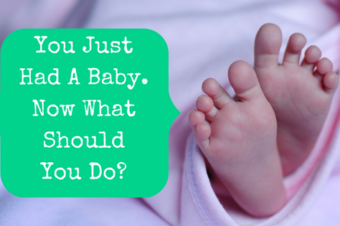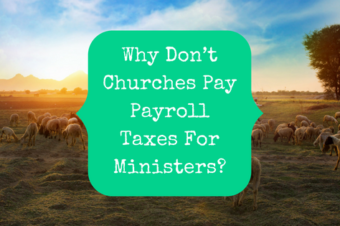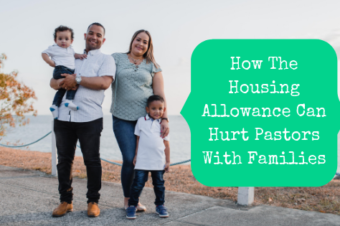The internet is plastered with articles discussing the merits of Roth versus traditional accounts. The Pastor’s Wallet even has one for IRAs. They talk about the different taxation, time horizons, and how to pick the right kind of retirement plan for you. If you’re a pastor, though, you should ignore them all.
If you’re a pastor, you should invest in a traditional 403(b) (if it’s a 403(b)(9), which is the type that churches sponsor). At least some, if not all, of your retirement money should be going into a traditional 403(b), not a Roth 403(b). It doesn’t really matter what your personal details are. If your church or denomination offers a 403(b), it is a waste for you to put all of your money into a Roth account.
The Difference Between Roth & Traditional Accounts
Before I tell you why I’m taking such a bold and non-personalized stance, let me give you some background. The major difference between traditional and Roth accounts is the taxation.
With a Roth account, you pay taxes on the money before you put it in. Then, everything you withdraw is tax-free. With a traditional account, you invest the money before paying taxes, but then you pay income taxes on all of your withdrawals. The difference is whether you pay the taxes on the money now or in retirement.
Why Traditional 403(b)s Are Better For Pastors
What makes pastors unique in the Roth versus traditional debate is the clergy housing allowance. Ministers have a special privilege where they can pay for all of their housing expenses tax-free. And it’s not just for while you’re in active ministry. You can claim a housing allowance in retirement, too, if you have a church-sponsored retirement plan. Like a 403(b)(9).
This means that in retirement, the housing allowance will allow you to take distributions from your 403(b) completely tax-free for housing expenses. If the housing allowance makes it possible to take money out tax-free, then having a Roth is irrelevant. Why would you pay taxes on the money before investing it if you were going to be able to take it out tax-free either way?
Let’s say you have $1,000 to invest for retirement and you’re in a 10% tax bracket. With a Roth, you would pay your $100 tax and then put the remaining $900 into your retirement savings account. Then, in retirement, you can take withdrawals from the account without paying any taxes.
If you were using a traditional 403(b), you would put the entire $1,000 into the account without paying any taxes on it. Then, in retirement, anything you took out for qualified housing expenses would be tax-free. You would still have to pay taxes on the money if it were used for other things.
How much of a difference does paying that $100 in taxes make? Let’s say you leave the money invested for 30 years and earn 8% interest on it. Your Roth account, where you only invested $900, grows to $9,056. That’s pretty impressive. But, your traditional account, where you put in the entire $1,000, grows to $10,062. That’s even more impressive. That’s over $1,000 difference, and the more you invest, the bigger the difference is.
How To Determine The Best Way To Invest For Retirement
As you can see, it doesn’t make any sense to put money that will be used for housing expenses into a Roth account. However, not all of your expenses in retirement will be for housing.
You could make a case for saving some in a Roth account for living expenses and saving some in a traditional account for housing expenses. There’s nothing wrong with that. Or you could use Social Security and your IRAs or other savings to pay for living expenses and your 403(b) for housing. That works too.
Take a look at your current tax return. After the housing allowance and deductions, how much of your everyday living expenses are you paying taxes on? Based on your spending, how much of your 403(b) do you think will end up being taxable in retirement after all of the deductions?
It’s important to remember, though, that you can only take a housing allowance in retirement from a church or denominational retirement plan. You cannot take one from your IRA (even if it contains funds rolled over from a church account) or a 401(k) from a secular employer. You can read more about that here.
As you strategize for your retirement, just remember this: If you have access to a church or denominational traditional 403(b), put the money that will go towards housing expenses there. Putting it anywhere else will cause you to waste money paying unnecessary taxes.











